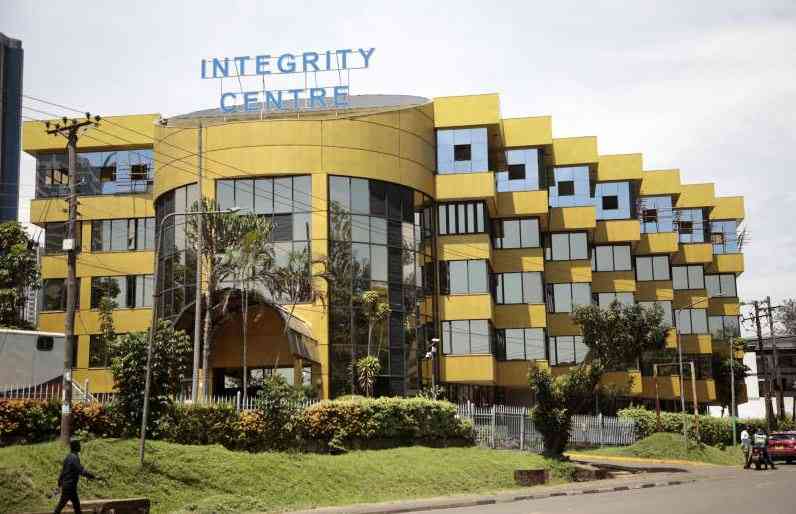What is the value of zero? If you want to establish this value, you only need to scrutinise the Sh791,385,000 lost from the National Youth Service funds and you will surprise yourself.
You will establish that indeed zero has great value, at least in fraud, and what appears to be a zero-sum game could be quite something else, once the cash is wired into a bank account.
According to investigators of the NYS scam, perpetrators of the rip-off only needed to add a zero to their transaction amounts to claim figures 10 times the actual claim.
Where a supplier supplied goods worth Sh10,000, a zero would be added to make it Sh100,000. Where supplies totaled Sh1 million they would shoot to Sh10 million in claims and where they totaled Sh10 million they would balloon to Sh100 million in the claims.
Fleecing Kenyans of their hard-earned sweat has never been that easy courtesy of the magical zero.
“It is clear that a zero has been added on each amount entered in the IFMIS system resulting in extra millions of shillings to be paid to the supplier. This is a case of manipulation of the IFMIS system,“ a Banking Fraud Investigations Unit established.
Apart from adding the zero in IFMIS, the fraudsters would also add a zero in the triplicate copies of LPOs attached to the payment vouchers to regularise their transactions. They however forgot or could not change the figures in the quadruplicate LPO.
Suspect transactions
The fraudulent activity involving addition of zero was figured out in 18 suspect transactions where amounts reflected in the quadruplicate LPOs (Local Purchasing Orders) were found to be different from the amounts entered in the IFMIS.
In one case for instance illustrated in the report, a company owned by one Josephine Kabura Irungu called Form Homes Builders was paid a total of Sh154 million for supplies of road construction materials worth Sh15 million.
The amounts were paid in four transactions of Sh39 million, Sh38.8 million and two sets of Sh38.5 million. The actual amounts in the LPOs however, according to the BFIU report, is Sh3.9 million, Sh3.88 million and two sets of Sh3.85 million.
Put differently, the supplier made a cool Sh139 million in addition to the profits she made in supplying the Sh15 million worth of materials.
From the report, three companies all under directorship of Ms Irungu were paid a total of Sh791 million in a span of five months. The monies were credited to their bank accounts held at Family Bank.
Investigators put a total of Sh712 million as the total fraud monies paid to Ms Irungu‘s companies. This is the difference of the monies paid through IFMIS and the ones in the book copy of the LPOs.
“This is the amount considered as having been stolen,“ the investigators concluded. The first payment of Sh15 million went through on the eve of Christmas in 2014. On the eve of the New Year (December 29, 2014), Ms Irungu‘s company was paid a total of Sh66 million in two payments of Sh39 million and Sh37 million.
Stay informed. Subscribe to our newsletter
By January 19, she had been paid another Sh124 million in four separate payments issued on two separate days. The month of February was not particularly lucrative for Ms Irungu‘s companies as they were paid only Sh85 million. However the month of March proved a bountiful one for Ms Irungu‘s companies which got a total of Sh432 million.
In fact, on one single day (on March 11, 2015), Irungu‘s Roof and All Trading company was paid a total of Sh111 million. On another good day, March 24, Ms Irungu‘s Reinforced Concrete Technologies was paid Sh93 million. Other than the three companies, the BFIU report lists three other companies – Gilnak General Supplies, Mindul Learning Equipments and Gilgrains General Supplies – all associated with Ms Irungu which scooped Sh106 million from State Department for Planning and ministry of Youth.
Limited information
The latter payments were done between December last year and April this year. The report says the three directors of the six companies were traced and interviewed but they denied receiving payments in respect of materials they delivered.
“They produced some delivery notes which indicate that the materials are loaded to NYS trucks from two quarries at Ongata Rongai and transported to Kibera and other ongoing slum upgrading projects. They buy the materials cheaply from a man who has rented the quarries from the land owners and sells the same to NYS at a high value,“ the report states.
The BFIU report says claims by Irungu that she was not paid were not true because payments were traced to her bank accounts at Family Bank. Incidentally, when investigators checked in at the Family Bank accounts of Ms Irungu, they found all the money had been withdrawn.
When cyber forensic investigators attempted to find out persons who entered the fraudulent entries in the system, they couldn‘t find out. They found out that the NYS IFMIS users had been using http browser.
“The challenge with this is that in doing forensic analysis, one can only recover limited information from the browser history. To get details of all transactions done requires getting the image of the IFMIS server for analysis,“ another BFIU report states.
The report is categorical that certain NYS employees colluded with suppliers to facilitate the fraud “resulting in inflated amounts being entered in the IFMIS by introduction of a zero in all these transactions.“
The “zero-addition strategy“ deployed in the NYS transactions contradicts all known attributes of figure zero as a mere numerical symbol and as a concept meaning absence of quantity. The quantity of zero in NYS millions is invaluable.
 The Standard Group Plc is a
multi-media organization with investments in media platforms spanning newspaper
print operations, television, radio broadcasting, digital and online services. The
Standard Group is recognized as a leading multi-media house in Kenya with a key
influence in matters of national and international interest.
The Standard Group Plc is a
multi-media organization with investments in media platforms spanning newspaper
print operations, television, radio broadcasting, digital and online services. The
Standard Group is recognized as a leading multi-media house in Kenya with a key
influence in matters of national and international interest.
 The Standard Group Plc is a
multi-media organization with investments in media platforms spanning newspaper
print operations, television, radio broadcasting, digital and online services. The
Standard Group is recognized as a leading multi-media house in Kenya with a key
influence in matters of national and international interest.
The Standard Group Plc is a
multi-media organization with investments in media platforms spanning newspaper
print operations, television, radio broadcasting, digital and online services. The
Standard Group is recognized as a leading multi-media house in Kenya with a key
influence in matters of national and international interest.





